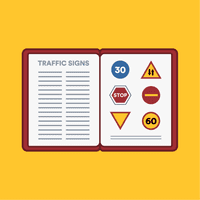How to start your research paper [step-by-step guide]

Research papers can be short or in-depth, but no matter what type of research paper, they all follow pretty much the same pattern and have the same structure.
A research paper is a paper that makes an argument about a topic based on research and analysis.
There will be some basic differences, but if you can write one type of research paper, you can write another. Below is a step-by-step guide to starting and completing your research paper.
1. Choose your topic
Choose a topic that interests you. Writing your research paper will be so much more pleasant with a topic that you actually want to know more about. Your interest will show in the way you write and effort you put into the paper. Consider these issues when coming up with a topic:
- make sure your topic is not too broad
- narrow it down if you're using terms that are too general
2. Find information on your topic
Academic search engines are a great source to find background information on your topic. Your institution's library will most likely provide access to plenty of online research databases. Take a look at our guide on how to efficiently search online databases for academic research to learn how to gather all the information needed on your topic.
If you’re struggling to find a topic for your thesis, take a look at our guide on how to come up with a thesis topic.
3. Create a thesis statement
The thesis statement is one of the most important elements of any piece of academic writing. It can be defined as a very brief statement of what the main point or central message of your paper is. Our thesis statement guide will help you write an excellent thesis statement.
4. Create a research paper outline
In the next step, you need to create your research paper outline. The outline is the skeleton of your research paper. Simply start by writing down your thesis and the main ideas you wish to present. This will likely change as your research progresses; therefore, do not worry about being too specific in the early stages of writing your outline.
Then, fill out your outline with the following components:
- the main ideas that you want to cover in the paper
- the types of evidence that you will use to support your argument
- quotes from secondary sources that you may want to use
5. Organize your notes
Organizing all the information you have gathered according to your outline will help you later on in the writing process. Analyze your notes, check for accuracy, verify the information, and make sure you understand all the information you have gathered in a way that you can communicate your findings effectively.
6. Write your introduction
Start with the introduction. It will set the direction of your paper and help you a lot as you write. Waiting to write it at the end can leave you with a poorly written setup to an otherwise well-written paper.
7. Write your first draft of the body
The body of your paper argues, explains or describes your topic. Start with the first topic from your outline. Ideally, you have organized your notes in a way that you can work through your research paper outline and have all the notes ready.
8. Revise
After your first draft, take some time to check the paper for content errors. Rearrange ideas, make changes and check if the order of your paragraphs makes sense. At this point, it is helpful to re-read the research paper guidelines and make sure you have followed the format requirements. You can also use free grammar and proof reading checkers such as Grammarly.
9. Write your conclusion
Write your conclusion last and avoid including any new information that has not already been presented in the body of the paper. Your conclusion should wrap up your paper and show that your research question has been answered.
10. Revise again, edit, and proofread
Allow a few days to pass after you finished writing the final draft of your research paper, and then start making your final corrections. The University of North Carolina at Chapel Hill gives some great advice here on how to revise, edit, and proofread your paper.
As part of your final revision, be sure to check that you’ve cited everything correctly and that you have a full bibliography. Use a reference manager like Paperpile to organize your research and to create accurate citations.
Frequently Asked Questions about starting your research paper
👟 What is the first step to start writing a research paper?
The first step to start writing a research paper is to choose a topic. Make sure your topic is not too broad; narrow it down if you're using terms that are too general.
💪 What is the format of a research paper?
The format of your research paper will vary depending on the journal you submit to. Make sure to check first which citation style does the journal follow, in order to format your paper accordingly. Check Getting started with your research paper outline to have an idea of what a research paper looks like.
🥦 What section of a research paper should I write first?
Start with the introduction. It will set the direction of your paper and help you a lot as you write. Waiting to write it at the end can leave you with a poorly written setup to an otherwise well-written paper.
☕ What is the last step of a research paper?
The last step of your research paper should be proofreading. Allow a few days to pass after you finished writing the final draft of your research paper, and then start making your final corrections. The University of North Carolina at Chapel Hill gives some great advice here on how to revise, edit and proofread your paper.


